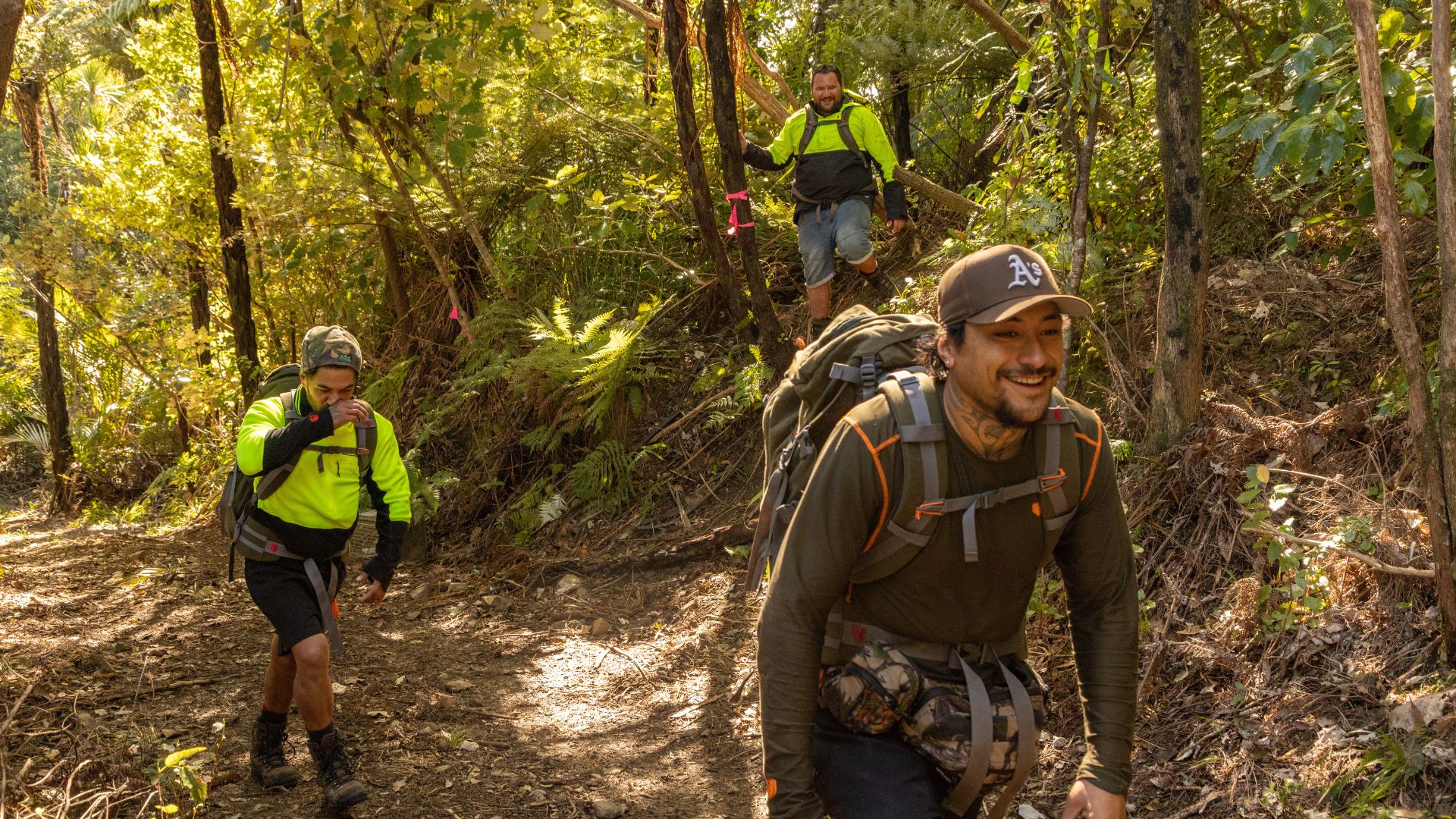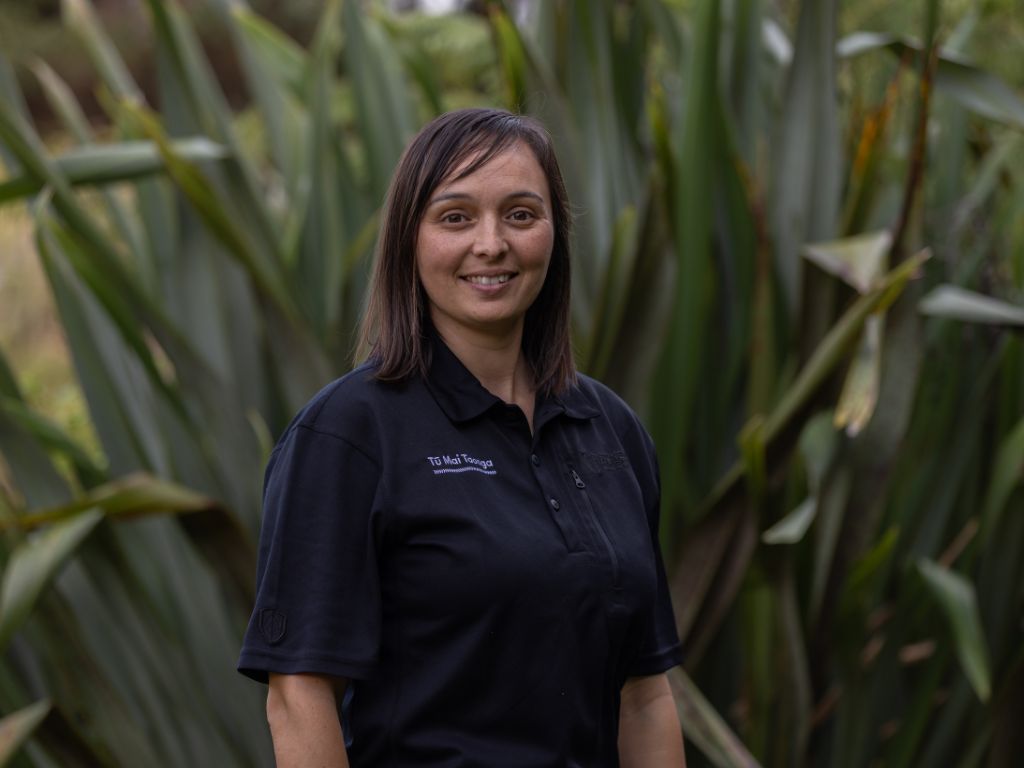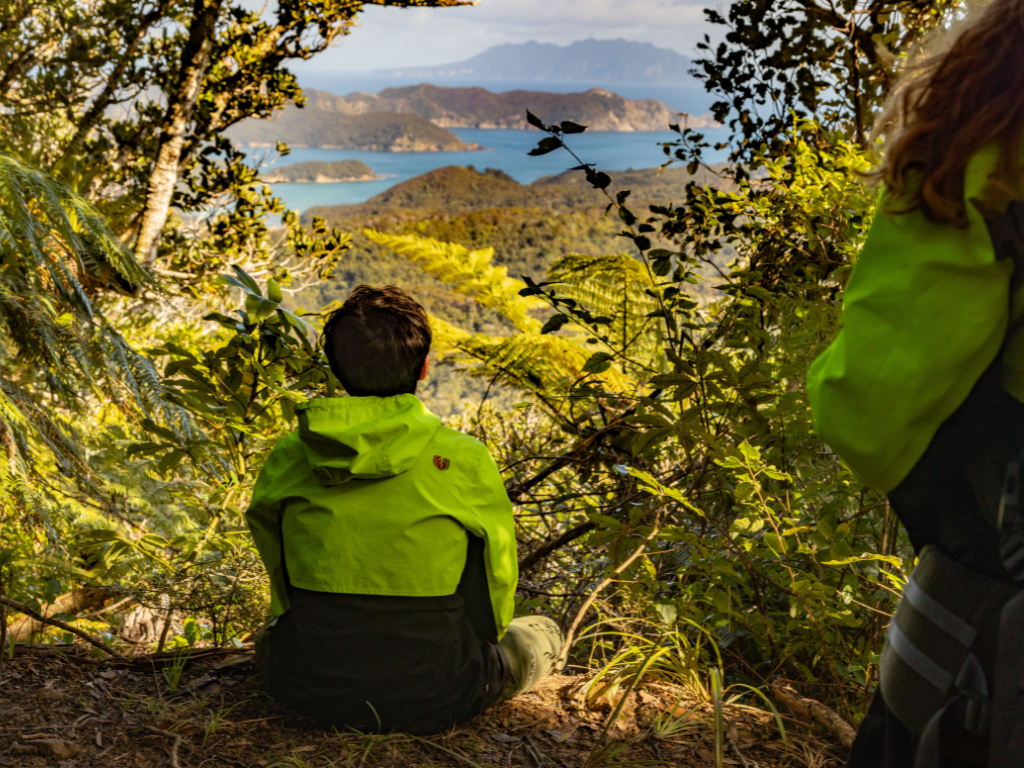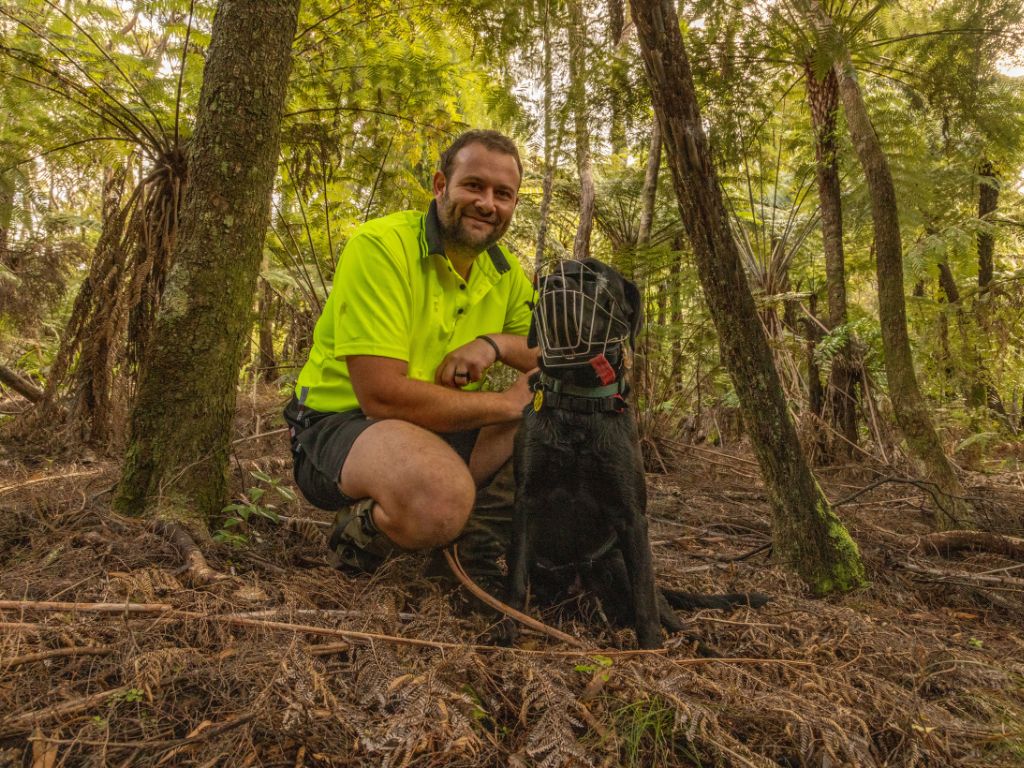The kaupapa of Tū Mai Taonga is not only about breathing new life into Aotea Great Barrier Island’s ngahere (forest); it’s reconnecting whānau with their whenua (land).

The island is already free from possums, Norway rats and mustelids, so the team is on a mission to remove all ship rats, feral cats and kiore.
Mana whenua Ngāti Rehua Ngātiwai ki Aotea have built the landscape-scale eradication project from the ground up. Tū Mai Taonga means ‘stand forth treasure’, and its central kaupapa is to make way for native species to thrive again.
Answering the call home
While the project aims to revitalise the ngahere and bring back the manu (birds), it’s equally important that the work supports the community.
Aotea might be a popular holiday destination, but it’s often been difficult for rangatahi (youth) to find long-term work on the island. Many move away to seek employment on the mainland or further afield.
But Tū Mai Taonga is reversing that trend. Communications manager Tim Higham says, “Word of mouth has proven the most effective recruitment tool through aunties and uncles telling whānau now is the time to come home.”
Makere Jenner is the Project Lead for Tū Mai Taonga, and her whānau have a long history on the island. She remembers spending childhood holidays at her nanna’s place in Akapoua, where the project base is located.
She moved from Canada to live on Rangiāhua, one of the smaller Māori-owned islands off the south-west coast of Aotea. Makere and her Canadian partner Matthew built their own house on the island, and the couple home-school their four children.
More than half of the 30 workers on the project whakapapa to Aotea. As well as giving the project deep roots, it means workers have to answer to their kaumātua if there’s a problem.

“It keeps us honest and on the right track,” Makere says.
Listening to mana whenua
Tū Mai Taonga operations manager Chris Giblin says that “being a hapū-led project made us take a step back, slow down and listen to what is important for mana whenua.” In the past, conservation groups came to Aotea with a pre-determined agenda.
Tū Mai Taonga is an opportunity for mana whenua to self-determine how conservation can be done on the island.
Makere explains that being mana whenua-led is important in many ways. “We utilise science and proven methodologies, but we also respect tikanga.

“We follow the principles of tika and pono. Tika means that we make sure we’re doing the right thing at the right time with the right people; pono means we bring integrity, intent, self-reflection and humility to the work that we do.”
One of the ways workers do this is by constantly asking themselves if they’re reflecting this central kaupapa.
“It is not about killing feral cats and rats,” Makere says, “it’s about careful mahi, with respect for life and restoring the mauri of the ngahere.”
The field crew have “really internalised that kaupapa,” she says.
Being mana whenua-led also means that culturally sensitive sites are treated with proper tikanga and respect.
Ngāti Rehua have called the island home for centuries, and this past can be found throughout the landscape.
Hiku Davis is the project’s wāhi tapu advisor, appointed by kaumatua. He works alongside the field team to recognise and avoid disturbing places of previous occupation and significance.
Careful feral cat management
Tū Mai Taonga is one of the only PF2050-funded projects to include feral cats as a target species in their eradication plan. While they are equally focussed on ship rats and kiore, the feral cats are a big point of difference for the project.
Chris is an expert in feral cat management, and he’s followed everywhere by his trusty feral cat conservation dog, Max. Chris has many years of experience in feral cat management and has helped with control and eradication projects throughout Aotearoa, including on several offshore islands.
Chris says feral cats are usually pretty easy to spot – “They’re wild animals, not cuddly pets.”
But to be extra certain, Tū Mai Taonga will check all cats caught in their live capture traps for microchips. If they find a microchipped cat, they can check it against the council’s ‘cat-alogue’ of domestic cats on the island. The field crew also get an alert on their phone when they come within 2 km of a property with a registered domestic cat.

Paving the way
Aotea was once considered too socially and geographically complex for a predator eradication project to succeed, and it was hard to attract funding for conservation mahi. Tū Mai Taonga is not only changing this perception, but it’s showing Aotearoa what’s possible when organisations allow mana whenua to lead.
The project is supported by Predator Free 2050 Limited, the Department of Conservation and Auckland Council. With a field crew that’s all about whānau, the team are making great progress towards their eradication goals.
Manaaki whenua, manaaki tangata, haere whakamua.
Care for the land, care for the people, go forward.

